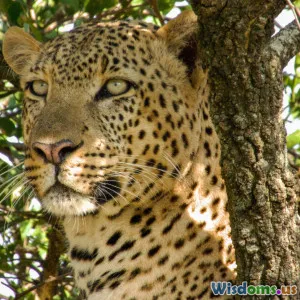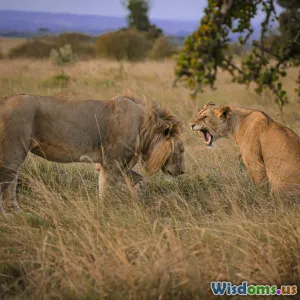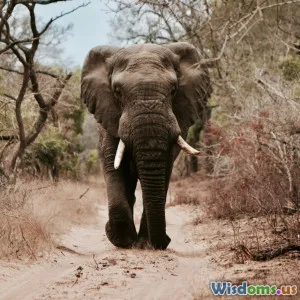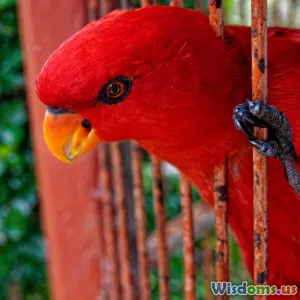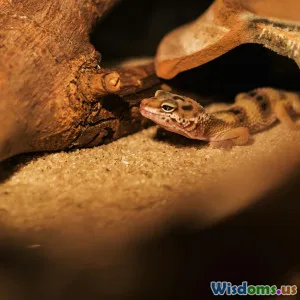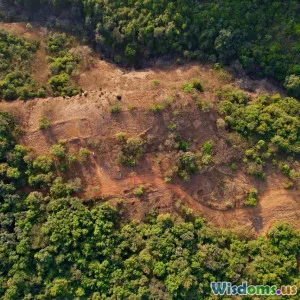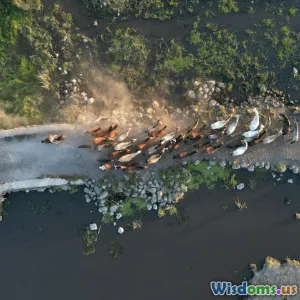
Wildlife Corridors How Simple Bridges Save Thousands of Animals
9 min read Discover how simple wildlife bridges save thousands of animals by restoring habitats and enhancing biodiversity worldwide. (0 Reviews)
Wildlife Corridors: How Simple Bridges Save Thousands of Animals
Introduction
Every year, roads and highways cut through natural habitats, creating substantial barriers for wildlife. These human-made constructions, while essential for modern connectivity, inadvertently cause a staggering number of wildlife deaths and habitat fragmentation. However, an elegant and effective solution has emerged: wildlife corridors and simple bridges designed specifically for animals. These structures are more than just engineering feats; they are lifelines that restore habitat connectivity, save thousands of animals, and promote biodiversity. In this article, we explore the remarkable impact of wildlife corridors and animal bridges, their design, success stories, and why they are imperative for environmental sustainability.
The Problem: Habitat Fragmentation and Roadkill
Fragmentation Threatens Wildlife
One of the most pressing threats to wildlife globally is habitat fragmentation. When natural landscapes are divided by roads, railways, or urban development, animal populations become isolated. This isolation limits genetic diversity, reduces breeding opportunities, and restricts access to food and shelter.
For example, a study published in Science Advances (2018) estimates that human infrastructure affects up to 70% of the Earth's terrestrial surface, dramatically increasing fragmentation.
Roadkill: A Preventable Tragedy
Roadways kill millions of animals annually worldwide. In the U.S. alone, estimates suggest 1 million vertebrates are roadkill each day, including deer, amphibians, reptiles, and small mammals. This not only causes ecological damage but also leads to human injuries and vehicle damage.
Introducing Wildlife Corridors and Bridges
What Are Wildlife Corridors?
Wildlife corridors are designated pathways that enable animals to traverse otherwise obstructed landscapes safely. These can include underpasses, overpasses, tunnels, and specially constructed bridges designed to mimic natural habitats.
Wildlife bridges are overpasses covered with soil, trees, and shrubs, blending seamlessly with the adjoining environments. They provide safe passages over dangerous roadways, facilitating migration, foraging, and mating behaviors.
The Concept Behind Wildlife Bridges
The principle is simple yet impactful: connect fragmented habitats so animals can move freely. This concept harnesses ecological science and civil engineering to harmonize human infrastructure and nature.
As Dr. John Frank, a conservation biologist, puts it, "Wildlife crossings are a tangible way we can repair the broken seams of our landscapes."
Types of Wildlife Crossing Structures
Overpasses (Green Bridges)
Overpasses are elevated pathways that replicate natural terrain with soil, vegetation, and sometimes water features. They are broad and provide ample space for diverse species, often spanning multiple lanes of highways.
Example: The Banff Wildlife Crossing in Alberta, Canada, is a pioneering overpass connecting national parks. Since its completion in 2012, thousands of animals including bears, elk, and wolves have safely crossed, reducing wildlife-vehicle collisions by nearly 86%.
Underpasses and Tunnels
These structures allow animals to pass beneath roads. They range from small culverts for amphibians to large tunnels for big mammals.
Example: In the Netherlands, underpasses combined with fencing guide toads safely under roads during their migration season, dramatically increasing survival rates.
Rope Bridges and Canopy Crossings
For arboreal animals like monkeys and squirrels, suspended rope bridges reconnect tree canopies separated by roads. These are cost-effective and preserve natural habits.
Example: In Costa Rica, rope bridges help endangered spider monkeys and possums cross busy roadways safely.
Benefits of Wildlife Corridors and Bridges
1. Reducing Wildlife Mortality
The primary benefit is the significant reduction in roadkill. For instance, studies at the Banff crossings report a decrease from over 40 animal-vehicle collisions annually to less than N, saving both animals and human lives.
2. Enhancing Genetic Diversity and Population Stability
By reconnecting habitats, corridors allow gene flow across populations which reduces the risk of inbreeding. This boosts resilience and long-term survival chances.
3. Supporting Ecosystem Services
Healthy wildlife populations contribute to key ecological functions like seed dispersal, pollination, and pest control, essential for ecosystem balance.
4. Economic Savings
Lower wildlife-vehicle collisions translate into reduced costs for vehicle repairs, insurance claims, and emergency services. According to a U.S. Federal Highway Administration report, every dollar spent on wildlife crossings saves approximately $6 in animal-vehicle collision damages.
Global Case Studies Highlighting Success
Banff National Park, Canada
As one of the world’s most studied examples, Banff’s system includes 44 wildlife crossings over highways cutting through natural boreal forests. Since 2001, more than 200,000 safe animal crossings have been recorded, preserving a vital corridor in the Rocky Mountains.
Netherlands’ Amphibian Underpasses
Amphibians, often overlooked in conservation, benefit from over 500 underpasses in the Netherlands. This extensive network has seen a 50% increase in toad population survival during migration seasons, highlighting the success of targeted wildlife protection strategies.
California’s Liberty Canyon Wildlife Crossing
Currently under construction, this bridge will connect fragmented mountain lion habitats near Los Angeles. Scientists expect it to facilitate safe passages for mountain lions and other wildlife, preventing genetic isolation for this threatened species.
Designing Effective Wildlife Corridors
Key Design Factors
- Habitat Connectivity: Corridors must connect critical habitats used for breeding, feeding, or migration.
- Species-Specific Needs: Size and vegetation cover tailored for local wildlife.
- Location: Positioned where animals naturally attempt to cross roads.
- Human Disturbance Minimization: To avoid intimidating or stressing wildlife.
Involving Stakeholders
Successful projects often include collaborations among ecologists, engineers, local communities, and government agencies. For example, public engagement in Banff was crucial for securing funding and long-term monitoring.
Challenges and the Way Forward
Despite successes, challenges remain:
- Costs and Funding: Wildlife structures require upfront investment and maintenance.
- Lack of Awareness: Public and political will sometimes lag behind.
- Urban Expansion: Increasing infrastructure development demands more innovative solutions.
Advances in remote sensing, wildlife tracking, and ecological modeling continue to improve corridor design. Moreover, integrating green infrastructure planning into urban development can scale solutions.
Conclusion
Wildlife corridors and simple bridges represent a beacon of hope in reconciling human infrastructure with the natural world. These crossings save thousands of animals, preserve biodiversity, and bolster ecosystem health. They remind us that sustainability is achievable through thoughtful, nature-inspired engineering.
As the pioneering conservationist Aldo Leopold emphasized, "To keep every cog and wheel is the first precaution of intelligent tinkering." Wildlife bridges are exactly that—intelligent tinkering to keep our planet’s intricate tapestry intact.
By supporting such projects and advocating for green infrastructure, we can all contribute to a future where animals and humans coexist harmoniously on shared landscapes.
Did you find this article insightful? Consider engaging with local conservation initiatives or advocating for wildlife-friendly infrastructure in your community.
Rate the Post
User Reviews
Popular Posts










